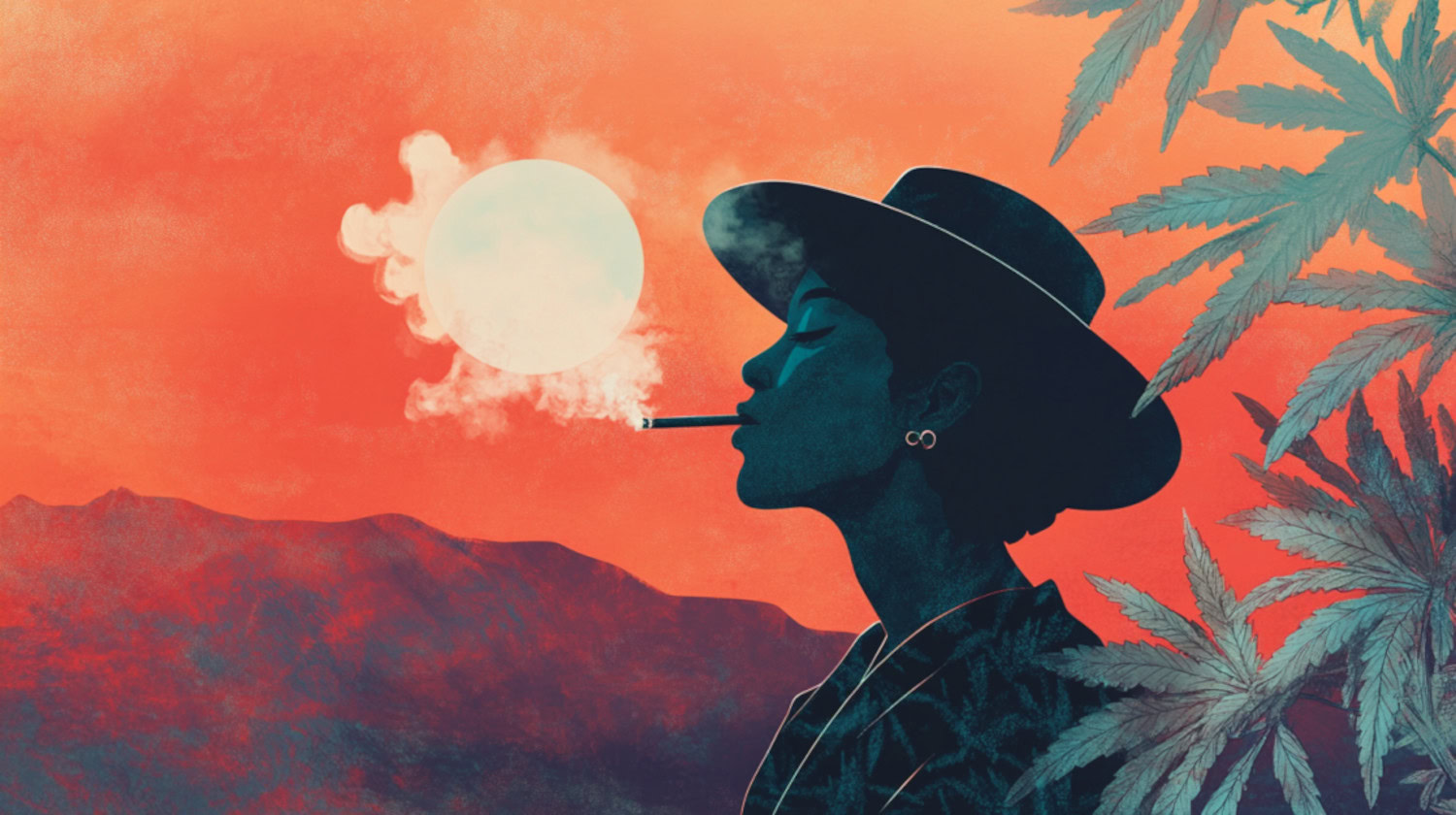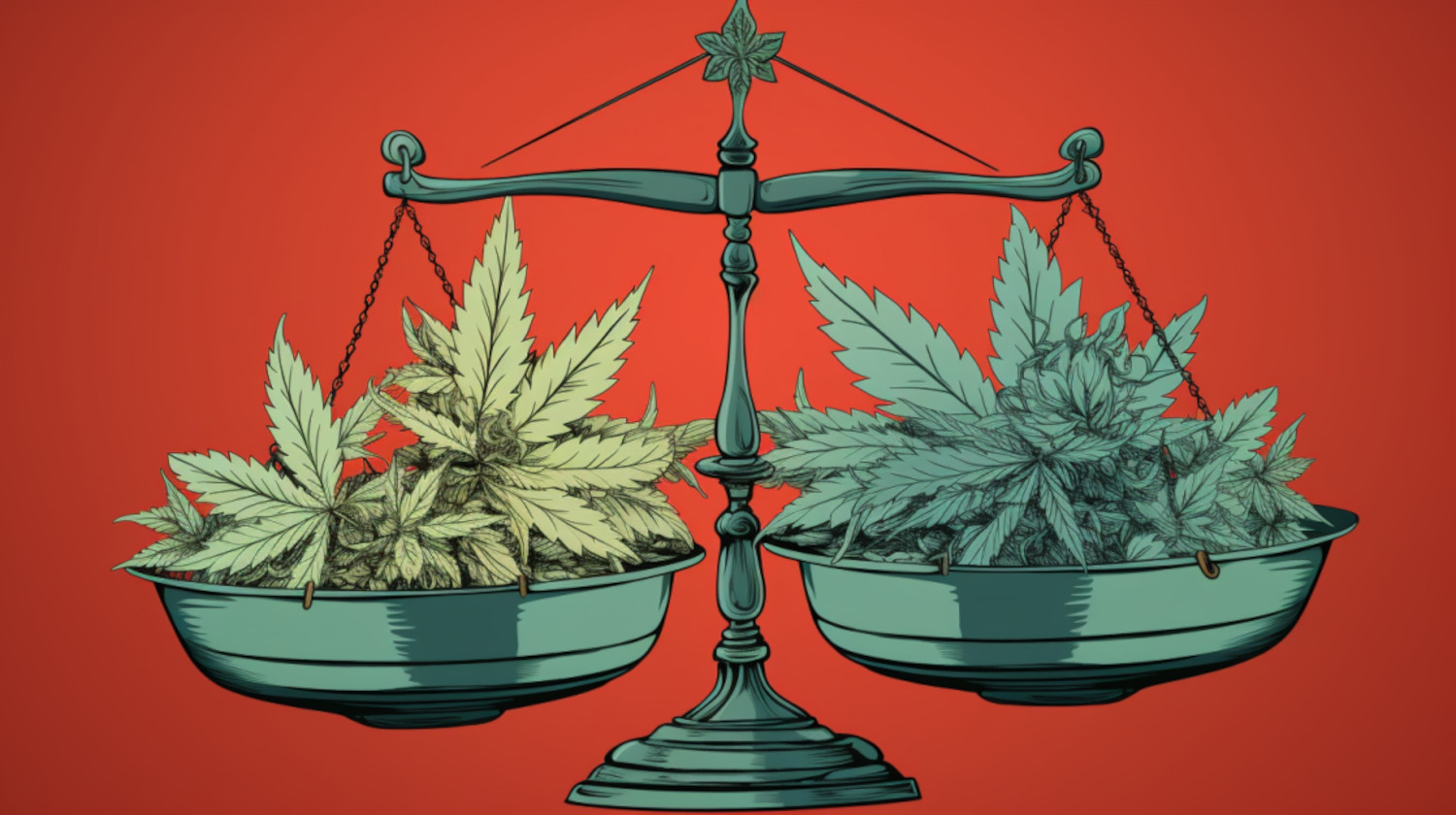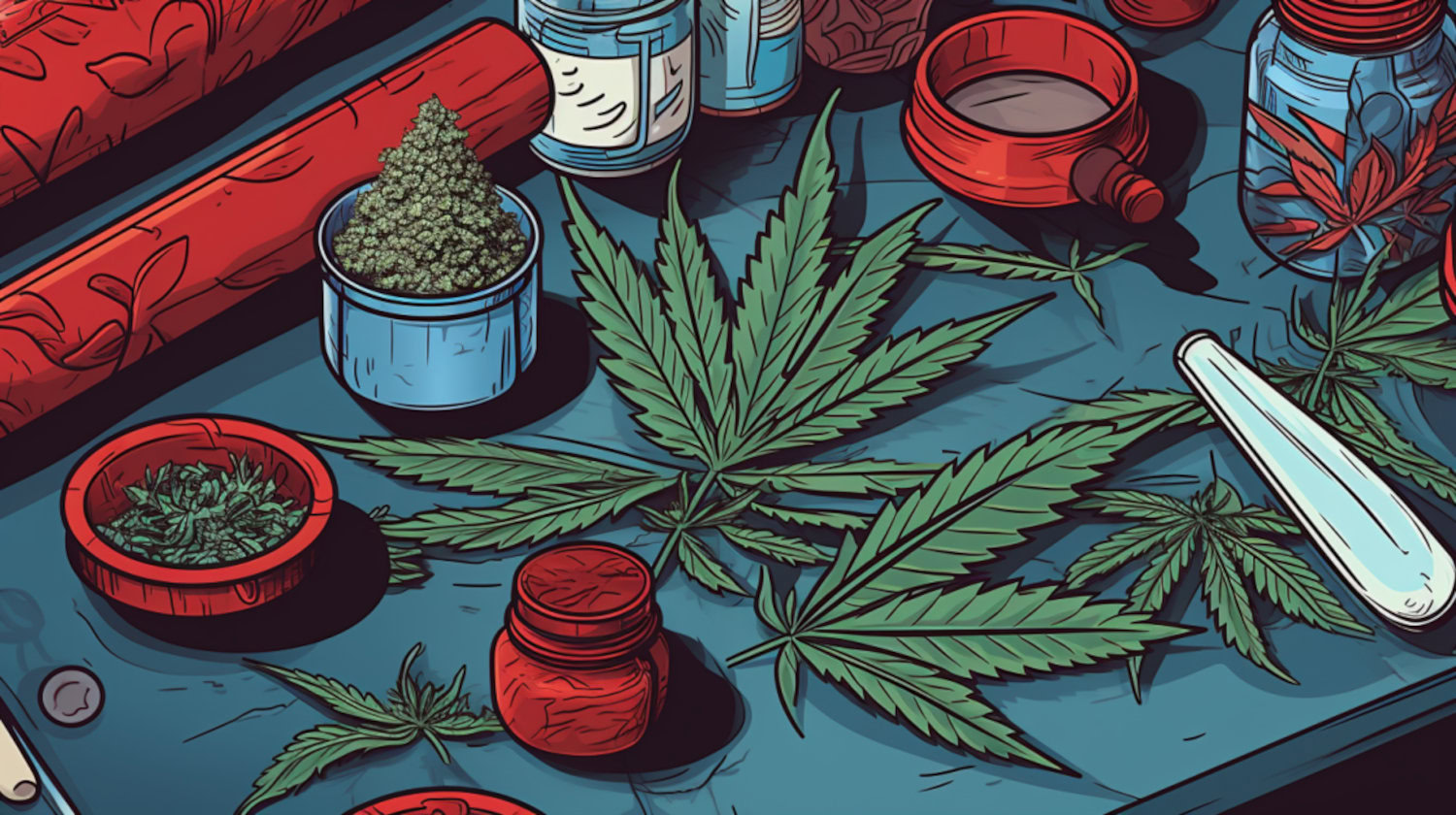In This Article
- What is a Joint?
- Preparing to Smoke a Joint
- Strain Selection
- Consumer Preference
- Grinding Your Cannabis
- How Do You Smoke a Joint?
- Lighting the Joint
- Inhaling Correctly
- Dosage
- Strain Selection
- Smoking Etiquette: The Basics
- Common Mistakes and How to Avoid Them
- Joint Alternatives
- Blunts
- Spliff
- Pipes
- Bongs
- Dry Herb Vaporizers
- Tips When Smoking a Joint for the First Time
Key Takeaways
- Start with small puffs and inhale gently into your lungs — not just your mouth.
- Use a lighter to toast the tip evenly, and rotate it as you light.
- Don’t hold in smoke too long — it doesn’t make the high stronger and can make coughing worse.
Joints are an iconic way to consume cannabis, whether rolled with skill or crafted on the fly. They’re a timeless symbol in the cannabis community, sparking conversation and encouraging sharing—though that's shifted somewhat in a post-pandemic world. Still, the joint remains a top choice for aficionados and casual users alike.
Learning how to smoke a joint is more than just a fun step in the learning process. It’s a rite of passage to some. (Essentially, if you know, you know.)
While smoking cannabis allows for plenty of customization, a few key components are essential to enjoy the experience fully. From choosing the right strain to preparing and lighting the joint, following basic steps can make for a much more relaxed and social experience.
What is a Joint?
A joint is cannabis rolled in paper, often resembling a cigarette or cone. Many joints, including pre-rolls sold at dispensaries, come with a cardboard filter at one end. These gained popularity over time for their added stability and smoother draw.
Some common types of joints through the years include:
- Standard Joint: A simple roll of cannabis flower in paper, often accompanied by a cardboard crutch for stability.
- Cone Joint: A take on the standard cigarette joint shape, adding a wider tip for easier draws and longer-lasting sessions.
- Pinner Joint: A less commonly used phrase today for smaller, thinner joints. Some consider pinners “low-dose joints” due to their smaller quantity of flower.
- Dogwalkers: A short, stubby joint intended for short sessions, often for one or two people max. Its name stems from the claim that these joints are perfect for someone to enjoy while walking their dog.
- Doinks: An elevated version of a joint, adding an eighth (3.5 grams) or more of flower.
- Hash Hole or Donuts: These are similar to doinks, but a layer of hash is placed in the middle of the flower for a higher potency effect.
Preparing to Smoke a Joint

To some, joint rolling is a practiced art. To others, it's a necessary step to enjoying their cannabis. No matter how a person sees it, a few steps are worth considering before rolling up.
Strain Selection
In cannabis, the saying goes, “quality in, quality out.” Before rolling and lighting up, check that the cultivar is high quality. Key indicators include the bud's smell, color, and texture. A quality strain should have a strong, pleasant aroma—often earthy, fruity, gassy, sweet, piney, or grassy. The color should be a healthy green, sometimes accented with hints of orange, deep purple, or yellow. In hand, the bud should feel sticky and slightly spongy, with a slight snap when broken apart.
Consumer Preference
Each person has a different take on what high-quality cannabis is, with personal preferences weighing heavily in the process.
Knowing a strain's expected effects before lighting up is wise, as it helps avoid surprises or unwanted experiences. Outcomes are often listed on the packaging, and consumers can gauge likely effects by noting the strain’s THC potency and full plant profile, which indicate both the effects' nature and intensity.
Grinding Your Cannabis
Properly ground cannabis allows for an even burn, which results in a smoother smoke and better flavor. Avoid overly fine or dusty textures, which can make the joint burn too quickly. Likewise, grinding too finely can clog your joints.
A grinder is the best tool for this job, ensuring consistent texture and preventing clumps. However, not all grinders are created equal. When choosing a grinder, try to use one that provides an even grind without overly shredding the bud, which can result in too fine a flower that can slip through some joint filters.
How Do You Smoke a Joint?

Lighting up and enjoying a joint is about as straightforward as it seems. Still, a few techniques can make the experience more enjoyable by prolonging the joint’s shape and extending its burn.
Lighting the Joint
To get a smooth, even burn, gently toast the tip of the joint while slowly rotating it. Avoid holding the flame directly on the paper — you're aiming for a cherry that burns evenly. An improperly rotated joint can result in an uneven burn, causing "canoeing," where only one side burns, leaving a canoe-like shape.
Inhaling Correctly
Once lit, take a small puff and pull the smoke into your mouth first, then inhale into your lungs. Holding the smoke in longer doesn’t increase the effects of THC — it just increases the chance of coughing.
If you're a new or inexperienced consumer, wait a minute or two between hits to see how you feel.
Dosage
Inhaling too much too fast is a common mistake for newcomers and people with low tolerance. The “start low, go slow” method was developed to mitigate these risks. When smoking cannabis, start with a small puff. Then, wait 10 to 15 minutes to assess yourself before taking another.
Strain Selection
Consumer preferences vary, as each person has unique reactions. In cannabis, those who need to feel uplifted may opt for a sativa-dominant cultivar, while someone looking to unwind may choose an indica-leaning hybrid. The plant’s profile (including terpenes and cannabinoids) is essential for an optimal experience.
For instance, CBG may indirectly increase drowsiness, while CBD may help with migraines instead. The ways cannabinoids interact, known as the entourage effect, can vary widely. Trial and error, while keeping track of your results, is the best way to find the ideal profile for your individual body chemistry.
Smoking Etiquette: The Basics

The cannabis community isn’t known for its rigidity and steadfast adherence to the rules. Still, some time-honored traditions have lived on for decades, if not longer. While all practices evolve and adapt, these are some common best practices that have served smokers well:
- Be Respectful of Non-Consumers: Cannabis has a strong aroma that, while enjoyable to many, isn’t appealing to everyone. Consumers should check the area before lighting up in shared or public spaces. Be mindful of where the smoke might drift, and check for anyone nearby or any open windows, vents, or other airflow sources.
- Puff, Puff, Pass: This classic rule means the person holding the joint takes two hits and then passes it to the person to the left of them. The number of hits may change by smoke circle, but the intent remains to share the love.
- Keep It Dry: Passing a joint with excess saliva can be unpleasant. This faux pas, known sometimes as “lipping,” has been frowned upon for ages. To avoid it, gently hold the joint between the lips or, better yet, hover slightly over the tip while inhaling.
Common Mistakes and How to Avoid Them
Even seasoned cannabis consumers sometimes encounter pitfalls that can upend an otherwise stellar session. Keep the following in mind for the best chance at an optimal experience.
- Avoid Over-Grinding: Too fine a grind can cause clogging in the joint and disrupt airflow. In some cases, incredibly fine flower can even slip through the filter and still end up in a person’s mouth. Avoid those outcomes by aiming for a balanced flower texture. You want the bud to look like dried oregano, not powder.
- Skip the Deep Inhales: Unlike cigarettes, joints don’t require deep inhalations. A gentle inhale works best for most people and reduces the risk of a harsh throat hit. Fun fact: You don’t need to hold the smoke in your lungs, either. Just take in a modest amount, then let it out. With the right bud, that’s all you’ll need.
- Use the Right Rolling Surface: Rolling can be tricky without a flat, clean surface. A rolling tray can help prevent spills and tidy your workspace, especially if rolling on the go. Make sure you clean your tray after every use (or clean regularly) to avoid any build-up.
- Store Your Cannabis Correctly: Proper storage is key to maintaining freshness and longevity, whether storing bud or a half-smoked joint. Always store flower in an airtight, UV-protected container and place it in a cool, dry place. Doing so will keep the plant at a cool temperature and away from elements like air, humidity, and UV light that degrade cannabis compounds.
- Set the Scene: Cannabis smoking is intended to be an enjoyable experience, with the setting playing an important role. While it’s possible to consume cannabis anywhere it’s legal, not all environments are ideal. For the best experience, especially with THC strains, a comfortable and familiar place is recommended.
Joint Alternatives
While many consumers enjoy smoking dry flower from a joint, there are numerous other methods to utilize, allowing for a rather customizable experience.
Understanding these alternatives can help answer 101-level questions like how long does it take to smoke a joint or what’s the best way to smoke compared to other methods.
Blunts
Blunts are similar to joints in that they’re popular, portable cannabis cigarettes. The primary difference is the addition of tobacco from a blunt’s leaf wrap. The wrap’s added aromas and flavors add to the diversity between the two popular picks.
Spliff
Another option similar to joints is the spliff, distinct for its blend of cannabis and tobacco. Unlike blunts, spliffs are rolled in the same paper typically used for joints but with a mixture of cannabis and tobacco instead of pure cannabis flower. While spliffs are widely recognized as this hybrid, some suggest that the term originally emerged in Jamaica as an alternative word for joint, without including tobacco.
Pipes
Pipes are ideal for reusability, making them a more cost-effective option over time. Entry-level pipes are affordable and provide smoother hits, especially with a water pipe that cools the smoke.
Bongs
Bongs are water pipes that are often larger, delivering stronger hits. However, most bongs are fragile and require frequent cleaning, especially if they have complex designs.
Dry Herb Vaporizers
Dry herb vaporizers offer a unique approach by heating cannabis below the combustion point, resulting in a smoke-free experience. Dry herb enthusiasts often claim the experience includes a cleaner taste and a smoother hit. These devices are available in tabletop or handheld models.
Tips When Smoking a Joint for the First Time
If you’re new to smoking joints, go slow and focus on enjoying the process. Take breaks between puffs, and choose a strain with lower THC if you're unsure how you'll react. And keep some water nearby, and don’t stress if you cough — it’s normal.
Still not sure if smoking is for you? Many cannabis consumers prefer vaporizers or edibles for a gentler experience. Whatever you choose, know your limits and stay in a safe, comfortable setting.
The information in this article and any included images or charts are for educational purposes only. This information is neither a substitute for, nor does it replace, professional legal advice or medical advice, diagnosis, or treatment. If you have any concerns or questions about laws, regulations, or your health, you should always consult with an attorney, physician or other licensed professional.




